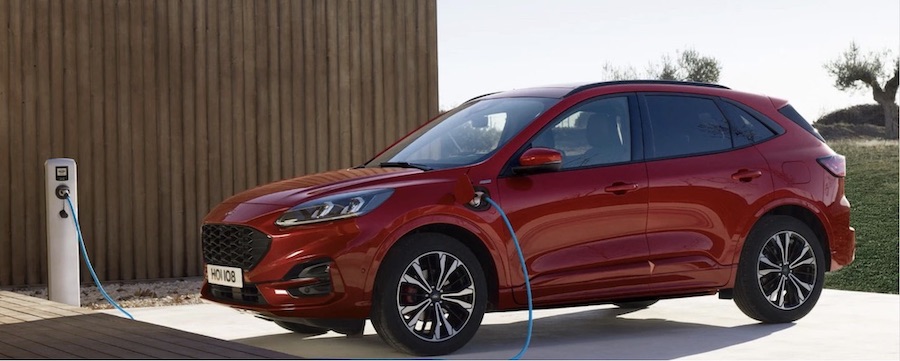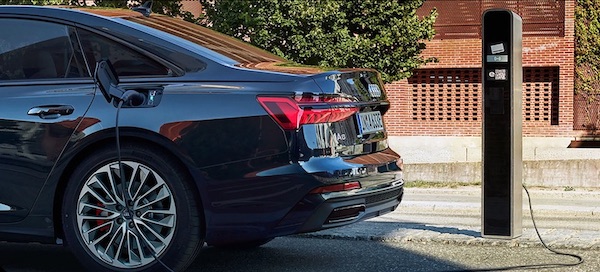Overview
Ford Motor Company, the US automotive manufacturer stepped firmly into the fast evolving electric vehicle (EV) race in 2019, with the unveiling of its ‘new breed of Mustang’, the all-electric Mustang Mach-e sport utility vehicle (SUV). Ford, headquartered in Michigan, United States was founded in 1903 by the legendary Henry Ford at the age of 39. The company has been credited for introducing modern methods of large-scale management/ manufacturing in the early 20th century.
Ford is the second-largest automotive manufacturer in the United States, and in the top 10 globally. The company is largely owned by institutional investors (60%). However, the Executive Chairman of the Ford board is William Clay Ford Jr., the great-grandson of Henry Ford. The company has operations globally, to include: United States, Canada, Mexico, China, India, the United Kingdom, Germany, Turkey, Brazil, Argentina, Australia, and South Africa. As of 2023, the company sold over 4.4 million cars worldwide.
Ford involvement with hybrid electric vehicles dates back to 2004, when Toyota, the Japanese automobile manufacturer, granted Ford access to hybrid technology patented by Toyota. In 2007, Ford also announced a collaboration with Southern California Edison (SCE) to assess plug-in hybrids in the context of the grid. Ford has also been involved with hydrogen vehicles. The company aims to become a leader in clean transportation and become carbon-neutral by 2030.
The Ford electric vehicle (EV) portfolio includes both, battery-electric vehicle (BEV) and plug-in hybrid electric vehicle (PHEV) models:
- All-electric Ford Capri
- All-electric Ford Mustang Mach-E
- All-electric Ford Explorer
- Ford Kuga Plug-in Hybrid
Electric Cars: The Basics
For those of you new to zero-emission electric driving, we recommend a read of the following articles:
Sign up to the e-zoomed Electric Living newsletter
The Ford Kuga PHEV SUV
The Ford Kuga compact SUV has been manufactured by Ford since 2008. The Ford Kuga is currently in its third generation, which was introduced in early 2019 and went on sale late 2019, to include the Kuga PHEV.
The internal combustion engine (ICE) variant is available as an all-wheel drive (AWD) and front-wheel drive (FWD). The Kuga plug-in hybrid electric vehicle (PHEV) variant is only available as a front-wheel drive (FWD).
The Ford Kuga PHEV has much to offer those seeking lower-tailpipe emission electric driving, at a more affordable price. For families, the e-SUV offers much practicality and financial savings. Driving a PHEV on e-mode is much cheaper than driving an equivalent combustion engine variant. Electric driving can be as cheap as 10 pence per mile. Given the continued escalation in fuel prices in the UK, electric driving is fast becoming the best option for private and business car ownership.
Moreover, the pairing of the petrol engine with an electric motor, improves the fuel economy of the electric vehicle. Ford claims that the Kuga plug-in hybrid SUV can achieve a fuel economy up to 201.8 mpg, again, substantially better than the equivalent petrol variant (40.9 mpg).
However, achieving an improved fuel economy in a plug-in electric vehicle, requires the EV driven on the electric mode on a regular basis. If the electric drivetrain, powered by the onboard EV battery is not leveraged, the financial savings from driving an EV will not materialise.
For company-car drivers, there is a further bonus for driving the Ford Kuga PHEV i.e. a reduced Benefit-in-Kind (BiK-12%) tax charge. The UK government rewards drivers for driving vehicles with lower tailpipe emissions, and the Ford Kuga plug-in electric SUV has far lower tailpipe emissions (32g CO2/km) compared to the petrol only variant (156g CO2/km).
The Ford Kuga EV has a 14.4 kW onboard EV battery, with a claimed emission-free electric range up to 35 miles. Expect the real-world EV range to be closer to 30 miles. Nevertheless, sufficient electric range to meet most daily needs. Do keep in mind that 2/3rd of motorists in the UK drive a mere 30 miles a day.
This should not come as a surprise, given that the majority of our day-to-day trips are to the local grocery store, gym, high street, school-runs etc. The efficiency of the EV is further enhanced by regenerative braking, so do take advantage of it while driving!
The Ford electric vehicle (EV) has a 3.7 kW onboard AC charger. Using a dedicated EV charging station, the PHEV can be charged within 3 hours. We at e-zoomed recommend charging an EV overnight, when the electricity tariff rates are more affordable.
We also recommend getting into a habit of ‘topping-up’ the EV battery on a regular basis. This way, you can use the pure electric mode more often, and it is also better for the overall maintenance of the EV battery. Ford offers a 8-year or 100,000 miles warranty. The plug-in electric car does not offer DC charging compatibility.
In terms of performance, the front-wheel drive Ford Kuga plug-in hybrid will not set the heart racing, but the performance is certainly decent. The PHEV can achieve 0-62 mph in 9.2 seconds (maximum power: 225 PS). The top speed of the EV is 124 mph. The Ford Kuga plug-in hybrid pairs a 2.5-litre Duratec petrol engine with an electric motor. Of course, the EV also benefits from instant torque.
Despite the reduction in the boot space (581 L) due to the placement of the EV battery, the Kuga PHEV offers reasonable practicality for front and rear seat occupants, with ample headroom and legroom. The overall visibility and ease of driving is also good.
The EV also benefits from a Five-Star NCAP Safety Rating. Also on offer are a host of driving safety features, to include: personal driving assistant, adaptive cruise control, lane centring technology, lane keeping assistance and more.
The PHEV does not qualify for the UK government plug-in car grant (PiCG). Nevertheless, electric driving is good good for the environment and for the wallet! You can lease electric vehicles (EVs) via e-zoomed at very competitive prices!
| PROS | CONS |
|---|---|
| An affordable PHEV SUV | Not as stylish or iconic as the Mach-e electric SUV |
| Cheap to drive on electric mode | Only available as a front-wheel drive (FWD) |
| Practical and spacious | Onboard charger limited to 3.7 kW |
The All-Electric Ford Kuga PHEV SUV (credit: Ford)
| At A Glance | |
|---|---|
| EV Type: | Plug-In Hybrid Electric Vehicle (PHEV) |
| Body Type: | SUV |
| Plug-In Car Grant (PiCG): | Not available |
| Engine: | Petrol-Electric |
| Available In UK: | Yes |
| Variants (2 Options) |
|---|
| Ford Kuga ST-Line Edition/ X Edition (from £37,255/ £38,355) |
| Ford Kuga Vignale (from £39,655) |
| EV Battery & Emissions | |
|---|---|
| EV Battery Type: | Lithium-ion |
| EV Battery Capacity: | Available in one battery size: 14.4 kWh |
| Charging: | DC charging not available. On board charger: 3.7 kW AC (0% – 100%: 3 hrs) |
| Charge Port: | Type 2 |
| EV Cable Type: | Type 2 |
| Tailpipe Emissions: | 32g (CO2/km) |
| EV Battery Warranty: | 8 years or 100,000 miles |
| Average Cost Of Residential Charging | |
|---|---|
| Battery net capacity : 8.8 kWh | £1.27 |
| Battery net capacity : 11.6 kWh | £1.67 |
| Battery net capacity : 12.0 kWh | £1.73 |
| Battery net capacity : 13.10 kWh | £1.89 |
| Battery net capacity : 14.10 kWh | £2.03 |
- Note 1: The average cost of residential electricity in the UK varies depending on the region, supplier and type of energy used. An average for the UK is 14.40 p/kWh.
- Note 2: Not all EV manufactures make available the data on net EV battery capacity, and in a number of instances the EV battery capacity advertised, does not state if it is gross or net capacity. In general, usable EV battery capacity is between 85% to 95% of the gross available capacity.
| Charging Times (Overview) | |
|---|---|
| Slow charging AC (3 kW – 3.6 kW): | 6 – 12 hours (dependent on size of EV battery & SOC) |
| Fast charging AC (7 kW – 22 kW): | 3 – 8 hours (dependent on size of EV battery & SoC) |
| Rapid charging AC (43 kW): | 0-80%: 20 mins to 60 mins (dependent on size of EV battery & SoC) |
- Note 1: SoC: state of charge
| Dimensions | |
|---|---|
| Height (mm): | 1675 |
| Width (mm): | 1883 |
| Length (mm): | 4614 |
| Wheelbase (mm): | 2710 |
| Turning Circle (m): | 11.6 |
| Boot Space (L): | 581 |
| 2.5L Plug-In Hybrid | |
|---|---|
| EV Battery Capacity: | 14.4 kWh |
| Pure Electric Range (WLTP): | 35 miles |
| Electric Energy Consumption (kWh/100 km): | 15.8 |
| Fuel Consumption (mpg): | 201.8 |
| Charging: | DC charging not available. On board charger: 3.7 kW AC (0% – 100%: 3 hrs) |
| Top Speed: | 124 mph |
| 0-62 mph: | 9.2 seconds |
| Drive: | Front-wheel drive (FWD) |
| Max Power (PS): | 225 |
| Torque (Nm): | N/A |
| Transmission: | Automatic |
| Seats: | 5 |
| Doors: | 5 |
| Kerb Weight (kg): | 1,844 |
| Colours: | 7 |
| NCAP Safety Rating: | Five-Star |
While e-zoomed uses reasonable efforts to provide accurate and up-to-date information, some of the information provided is gathered from third parties and has not been independently verified by e-zoomed. While the information from the third party sources is believed to be reliable, no warranty, express or implied, is made by e-zoomed regarding the accuracy, adequacy, completeness, legality, reliability or usefulness of any information. This disclaimer applies to both isolated and aggregate uses of this information.












































